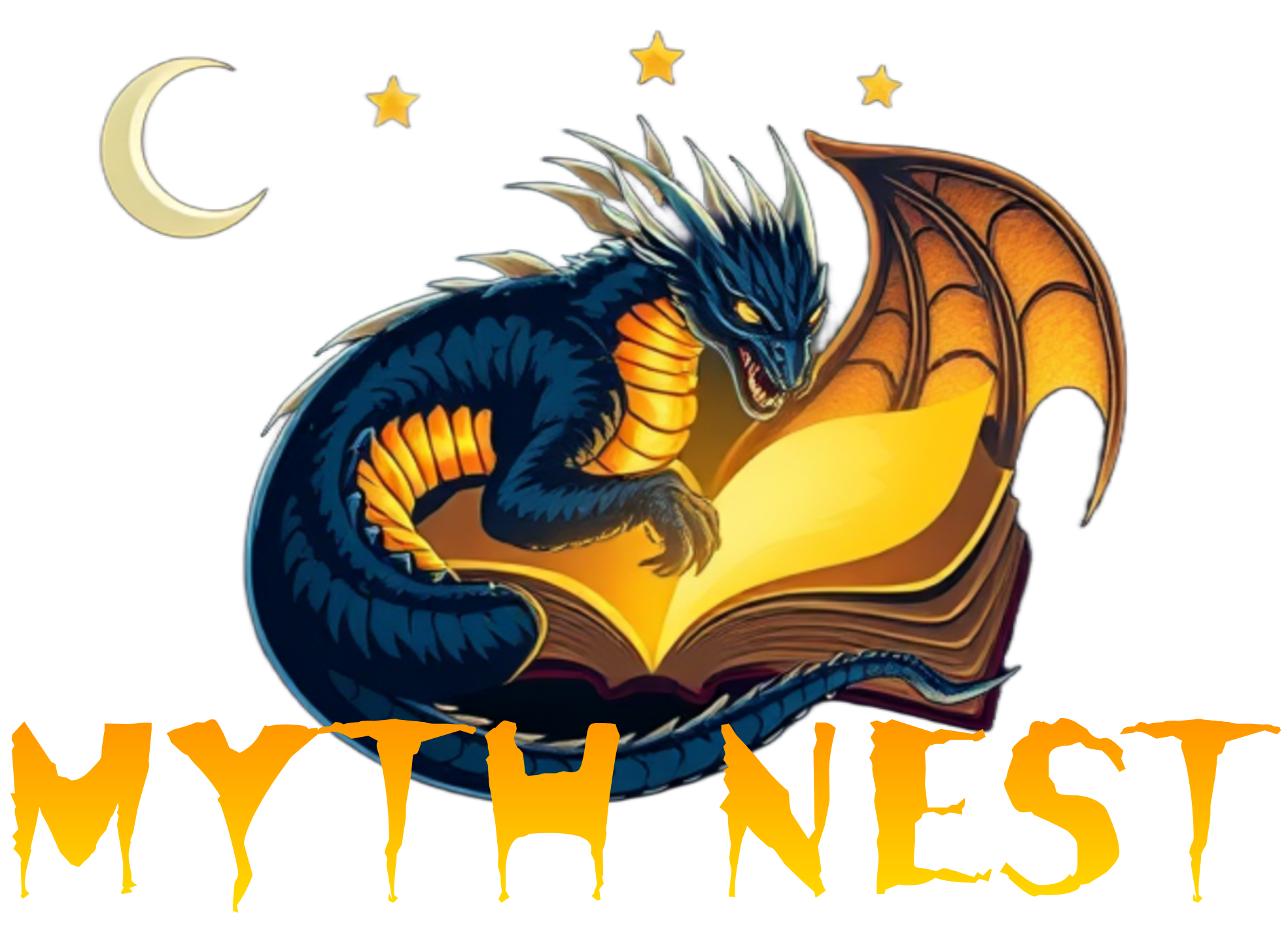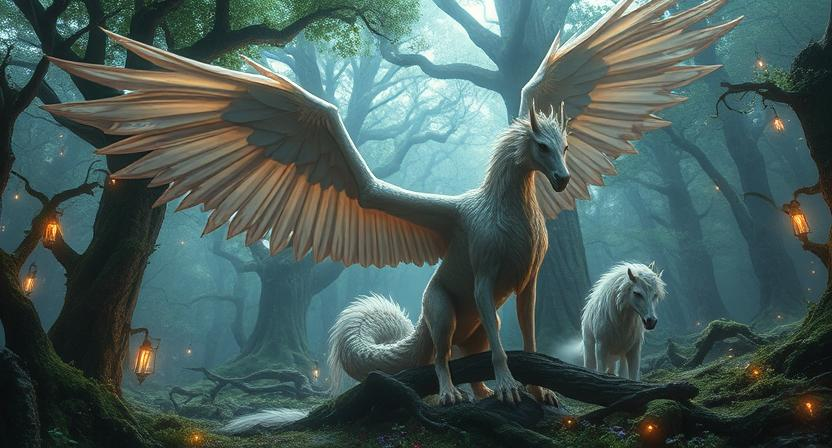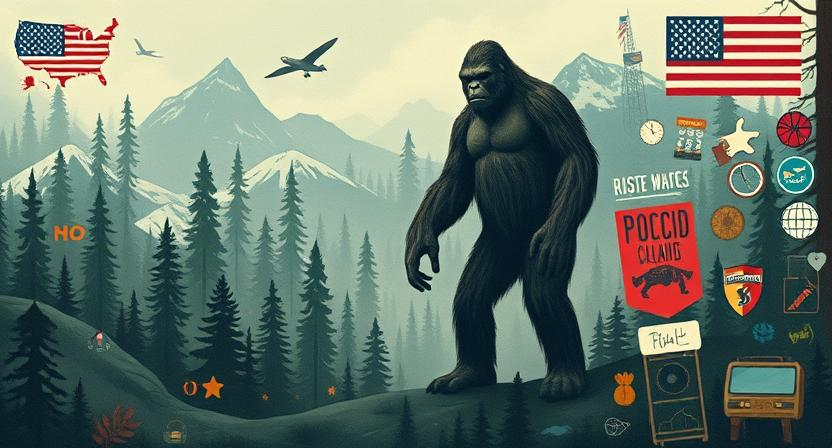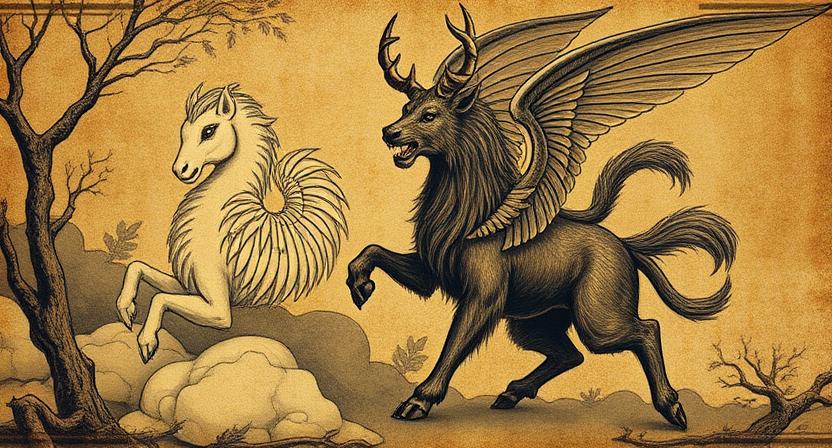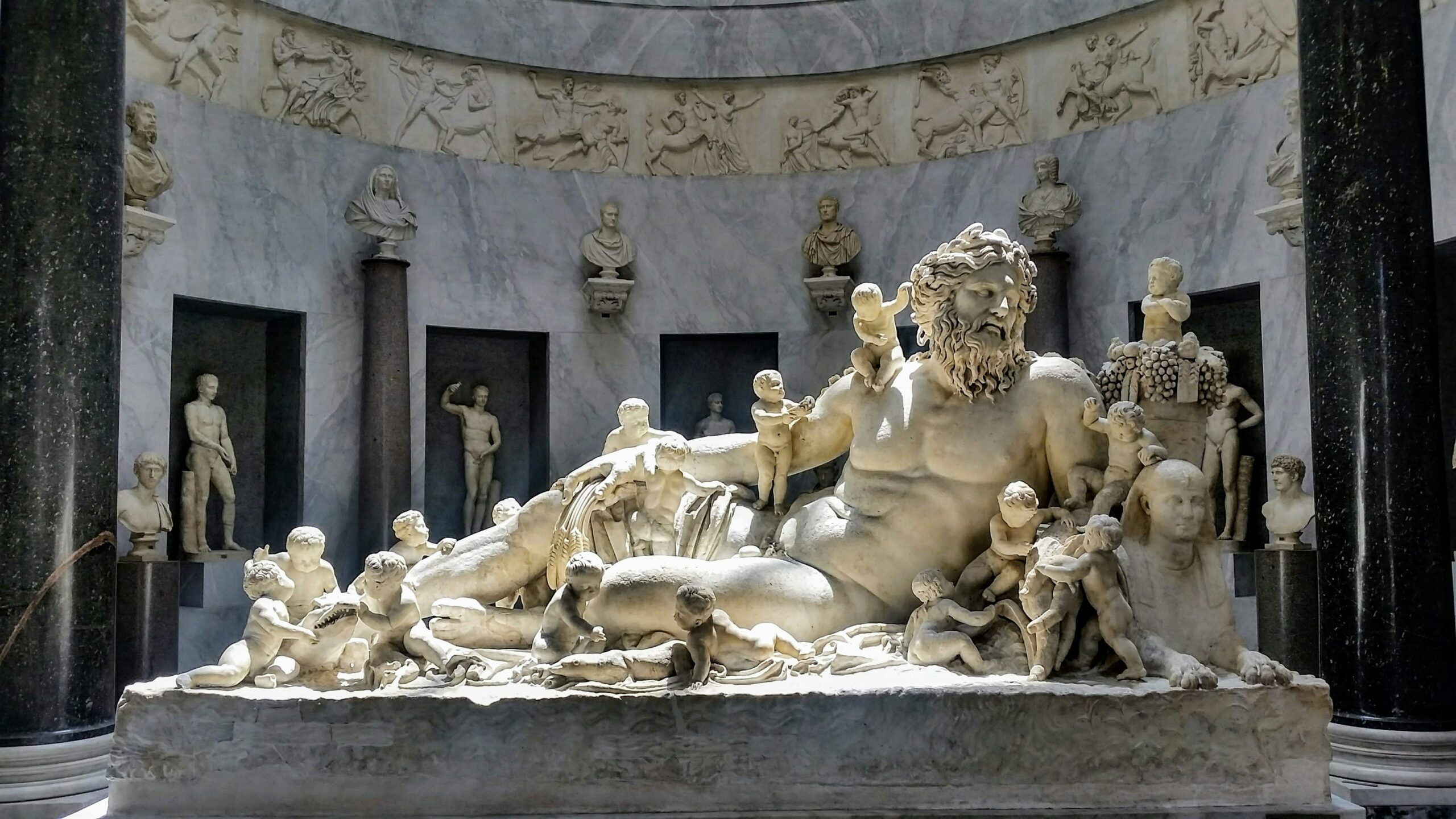Magical Beasts in Ancient Mythology

Griffins, majestic creatures with the body of a lion and the head and wings of an eagle, have long been revered in ancient mythology as symbols of courage and strength. These magnificent beasts are often depicted as guardians of treasures or noble warriors, embodying qualities of bravery and nobility. Their presence in various cultures such as Greek, Egyptian, and Persian mythology showcases the enduring fascination with these mythical creatures throughout history.
Unicorns, often associated with purity and grace, hold a special place in both ancient and modern folklore. These horse-like creatures with a single spiraling horn on their foreheads are believed to possess healing powers and are symbols of purity and innocence. From ancient Greek accounts describing unicorns as untamable wild creatures to their portrayal in modern fantasy as gentle and ethereal beings, the unicorn continues to capture the imagination of people around the world.
• Griffins are often depicted as guardians of treasures or noble warriors in ancient mythology
• They embody qualities of bravery and nobility, symbolizing courage and strength
• Griffins have been revered in various cultures such as Greek, Egyptian, and Persian mythology
• Unicorns are associated with purity and grace in both ancient and modern folklore
• These horse-like creatures with a single spiraling horn on their foreheads are believed to possess healing powers
• Unicorns symbolize purity and innocence, captivating the imagination of people worldwide
Griffin: A Symbol of Courage and Strength
Griffins are mythical creatures that have fascinated cultures throughout history. Known for their majestic appearance of a lion’s body with the head and wings of an eagle, they symbolize qualities of courage and strength. In various myths and legends, they are portrayed as noble protectors and guardians, embodying the ideals of bravery and power.
These magnificent creatures often serve as symbols of protection and valor in ancient folklore. With their ability to soar high in the skies and possess the ferocity of a lion, they are revered for their fearless nature and unwavering resilience. Griffins stand as a representation of the virtues that many aspire to embody in the face of adversity and challenges.
• Griffins are mythical creatures that have fascinated cultures throughout history
• Known for their majestic appearance of a lion’s body with the head and wings of an eagle
• Symbolize qualities of courage and strength in various myths and legends
• Portrayed as noble protectors and guardians, embodying ideals of bravery and power
These magnificent creatures often serve as symbols of protection and valor in ancient folklore. With their ability to soar high in the skies and possess the ferocity of a lion, they are revered for their fearless nature and unwavering resilience. Griffins stand as a representation of the virtues that many aspire to embody in the face of adversity and challenges.
The Origins of the Phoenix in Mythology
The Phoenix is a mythical bird that originates from ancient Greek and Egyptian mythology. Described as a magnificent creature with brightly colored plumage, the Phoenix is said to possess the unique ability to regenerate and be reborn from its ashes. This symbolism of death and rebirth has made the Phoenix a powerful symbol in various cultures throughout history.
In Greek mythology, the Phoenix is closely associated with the sun god Apollo and is believed to live for centuries before immolating itself in a spectacular display of flames. From the ashes of the old Phoenix emerges a new, young bird, symbolizing renewal and the cyclical nature of life. The story of the Phoenix has inspired countless legends and tales of resurrection, making it one of the most enduring and fascinating mythical creatures in history.
• The Phoenix is a mythical bird that originates from ancient Greek and Egyptian mythology.
• Described as a magnificent creature with brightly colored plumage, the Phoenix is said to possess the unique ability to regenerate and be reborn from its ashes.
• This symbolism of death and rebirth has made the Phoenix a powerful symbol in various cultures throughout history.
In Greek mythology, the Phoenix is closely associated with the sun god Apollo and is believed to live for centuries before immolating itself in a spectacular display of flames. From the ashes of the old Phoenix emerges a new, young bird, symbolizing renewal and the cyclical nature of life. The story of the Phoenix has inspired countless legends and tales of resurrection, making it one of the most enduring and fascinating mythical creatures in history.
Unicorns: From Ancient Greece to Modern Fantasy
Unicorns have been a prominent figure in mythology and folklore for centuries, their origins dating back to ancient Greece. In Greek mythology, unicorns were considered powerful and majestic creatures, known for their purity and grace. Often depicted as horse-like beings with a single spiraling horn protruding from their foreheads, unicorns were revered for their mystical qualities and believed to possess healing powers.
As time passed, unicorns continued to capture the imagination of people around the world, transitioning from ancient mythology to modern fantasy. In today’s popular culture, unicorns are often portrayed as whimsical and enchanting beings, symbolizing innocence, magic, and beauty. From children’s stories to adult literature, unicorns remain a beloved symbol of fantasy and wonder, captivating audiences with their elegance and charm.
• Unicorns have been a prominent figure in mythology and folklore for centuries, dating back to ancient Greece
• In Greek mythology, unicorns were considered powerful and majestic creatures known for their purity and grace
• Often depicted as horse-like beings with a single spiraling horn protruding from their foreheads
• Unicorns were revered for their mystical qualities and believed to possess healing powers
As time passed, unicorns continued to capture the imagination of people around the world, transitioning from ancient mythology to modern fantasy. In today’s popular culture, unicorns are often portrayed as whimsical and enchanting beings symbolizing innocence, magic, and beauty. From children’s stories to adult literature, unicorns remain a beloved symbol of fantasy and wonder captivating audiences with their elegance and charm.
Dragons: An Enduring Symbol of Power and Majesty
Throughout various cultures and time periods, dragons have been revered as symbols of power and majesty. These mythical creatures, often depicted as giant, fire-breathing reptiles with formidable scales and razor-sharp claws, have captured the imaginations of people around the world. In many legends, dragons are portrayed as guardians of treasures or powerful beings capable of great destruction.
Legends of dragons can be found in numerous ancient mythologies, from European folklore to Chinese mythology. In Western traditions, dragons are often portrayed as fearsome adversaries that must be defeated by brave knights seeking to prove their valor. On the other hand, Eastern cultures often view dragons as benevolent creatures associated with wisdom, longevity, and good fortune. Despite the differing interpretations, one aspect remains constant: dragons are universally respected for their strength and awe-inspiring presence.
• Dragons have been revered as symbols of power and majesty throughout various cultures and time periods.
• These mythical creatures are often depicted as giant, fire-breathing reptiles with formidable scales and razor-sharp claws.
• In many legends, dragons are portrayed as guardians of treasures or powerful beings capable of great destruction.
• Legends of dragons can be found in numerous ancient mythologies, from European folklore to Chinese mythology.
• Western traditions often depict dragons as fearsome adversaries that must be defeated by brave knights seeking to prove their valor.
• Eastern cultures view dragons as benevolent creatures associated with wisdom, longevity, and good fortune.
• Despite differing interpretations, dragons are universally respected for their strength and awe-inspiring presence.
The Centaur: Half-Man, Half-Horse

Centaurs are mythical creatures from ancient Greek mythology, known for their unique combination of human and horse characteristics. With the upper body of a man and the lower body of a horse, centaurs symbolize the blending of two worlds – the civilized and the wild. Often depicted as powerful and unpredictable beings, centaurs have been featured in various tales and legends throughout history.
These hybrid creatures are typically portrayed as skilled archers and fierce warriors, embodying attributes of both human intelligence and animal instinct. In Greek mythology, centaurs were often associated with revelry and chaos, as their dual nature led to conflicting behaviors and motivations. Despite their complex personalities, centaurs remain a fascinating symbol of the eternal struggle between civilization and nature.
• Centaurs are mythical creatures from ancient Greek mythology
• They have the upper body of a man and the lower body of a horse
• Symbolize the blending of two worlds – civilized and wild
• Often depicted as powerful and unpredictable beings, skilled archers, and fierce warriors
• Associated with revelry and chaos in Greek mythology due to conflicting behaviors
• Fascinating symbol of the eternal struggle between civilization and nature
The Sphinx: Guardian of Ancient Egyptian Tombs
The Sphinx, with the body of a lion and the head of a human, stands as a mighty guardian of the ancient Egyptian tombs. Carved out of a single massive block of limestone, this enigmatic creature is believed to symbolize strength, wisdom, and protection in Egyptian mythology. Its imposing presence at the entrance of the pyramids serves as a formidable deterrent to any who would dare desecrate the sacred resting places of the pharaohs.
The Sphinx’s mysterious smile has fascinated scholars and visitors for centuries, sparking countless interpretations and speculations about its true purpose and symbolism. Some believe that it represents the god Horus, while others see it as a manifestation of the sun god, Ra. Regardless of its exact meaning, the Sphinx remains a powerful symbol of the ancient Egyptian civilization’s reverence for the afterlife and the importance of safeguarding the souls of the departed.
• The Sphinx is believed to symbolize strength, wisdom, and protection in Egyptian mythology
• Its imposing presence at the entrance of the pyramids serves as a deterrent to desecration
• Scholars and visitors have been fascinated by the Sphinx’s mysterious smile for centuries
• Interpretations of its true purpose and symbolism vary, with some seeing it as representing Horus or Ra
The Kraken: A Legendary Sea Monster
Within the realm of maritime folklore, the Kraken looms large as a legendary sea monster feared by sailors for centuries. Descriptions of this colossal creature vary, but common traits include massive size, multiple tentacles, and the ability to drag entire ships beneath the waves with its formidable strength. The Kraken’s presence in tales of the sea serves as a warning of the treacherous and mysterious depths that sailors must navigate.
The origins of the Kraken are said to trace back to Scandinavian folklore, where it was believed to dwell off the coasts of Norway and Greenland. Stories of encounters with the Kraken have been passed down through generations, adding to the mystique and terror surrounding this mythical beast of the deep. Despite its fearsome reputation, the Kraken remains a captivating figure in maritime lore, capturing the imagination of those intrigued by the mysteries of the vast oceans.
• The Kraken is often depicted as a massive creature with tentacles that can reach great lengths
• Sailors have reported sightings of the Kraken throughout history, adding to its legendary status
• Some believe that the Kraken may have been inspired by real-life encounters with giant squids or other deep-sea creatures
• The myth of the Kraken continues to be popular in modern culture, appearing in literature, movies, and even video games.
The Chimera: A Terrifying Hybrid Creature
The Chimera is a creature from ancient Greek mythology that strikes fear into the hearts of all who hear its name. With the body of a lion, the head of a goat sprouting from its back, and a tail that ends in a venomous serpent’s head, the Chimera embodies the essence of terror and awe. Legends depict this monstrous hybrid as a formidable adversary that instills dread with its ferocious appearance and deadly abilities.
In tales of old, the Chimera is often portrayed as a merciless predator that ravages the countryside, terrorizing villages and striking fear into all who cross its path. Its lion’s roar echoes through the land, sending shivers down the spine of even the bravest warriors. The goat’s head breathes forth flames, scorching the earth and leaving destruction in its wake, while the serpent’s venomous bite is said to be lethal beyond compare. The legend of the Chimera serves as a cautionary tale, warning mankind of the consequences of arrogance and hubris.
• The Chimera is a creature from ancient Greek mythology
• It has the body of a lion, the head of a goat sprouting from its back, and a tail ending in a venomous serpent’s head
• Legends depict the Chimera as a formidable adversary that instills dread with its appearance and abilities
In tales of old, the Chimera is often portrayed as:
• A merciless predator that ravages the countryside
• Terrorizing villages and striking fear into all who cross its path
• Its lion’s roar echoes through the land, sending shivers down spines
• The goat’s head breathes flames, scorching earth and leaving destruction
• The serpent’s bite is said to be lethal beyond compare
The legend of the Chimera serves as:
• A cautionary tale warning mankind against arrogance and hubris
The Hippogriff: A Mysterious Creature of Legend
The Hippogriff is a fascinating creature that combines the features of a horse and a bird, symbolizing the unity of land and sky in ancient folklore. With the body of a horse and wings of an eagle, the Hippogriff is believed to possess majestic strength and agility, making it a symbol of freedom and power in many cultures.
Legend has it that the Hippogriff was first mentioned in the epic poem “Orlando Furioso” by Ludovico Ariosto in the 16th century, further solidifying its place in myth and legend. This mystical creature has since captured the imaginations of many, inspiring awe and wonder with its mythical presence.
• The Hippogriff is often depicted as a noble and proud creature, embodying qualities of courage and grace.
• In some tales, the Hippogriff is said to be untamable by all but the bravest and purest of heart.
• The symbolism of the Hippogriff varies across different cultures, with some seeing it as a symbol of love and loyalty while others view it as a harbinger of doom.
• Despite its mythical origins, the image of the Hippogriff has been popularized in modern literature and media, appearing in works such as J.K. Rowling’s “Harry Potter” series.
Basilisk: The King of Serpents

The Basilisk, also known as the “King of Serpents,” is a creature of ancient mythology shrouded in mystery and fear. Described as a hybrid of a serpent and a rooster, this legendary creature is said to possess deadly powers that can petrify anyone who gazes into its eyes. Its very presence strikes terror into the hearts of those who dare to cross its path.
Legends surrounding the Basilisk often depict it as a creature of immense power and malevolence, capable of causing destruction and chaos wherever it roams. It is said that even its breath can wither plants and cause instant death to any living being. Tales of brave heroes facing the Basilisk in epic battles have made it a symbol of danger and terror in the realm of mythical creatures.
• The Basilisk is often portrayed as a creature with the body of a serpent and the head of a rooster, combining features of both animals.
• Its deadly gaze is believed to have the power to turn anyone who looks into its eyes into stone, making it a formidable foe in legends and folklore.
• The Basilisk’s reputation for causing destruction and chaos has made it one of the most feared creatures in mythology, with stories of its powers striking fear into the hearts of many.
• Despite its fearsome reputation, tales of brave heroes facing off against the Basilisk have also emerged, showcasing epic battles between man and beast in ancient lore.
The Minotaur: A Monster of Greek Mythology
The Minotaur, a creature of Greek mythology, was known for its fearsome appearance and ferocious nature. With the body of a man and the head of a bull, this monstrous being struck fear into the hearts of all who encountered it. Legend has it that the Minotaur was imprisoned in a labyrinth on the island of Crete, where it devoured sacrificial victims sent as tribute.
Theseus, a renowned hero, ultimately faced the Minotaur in a daring display of bravery and cunning. With the help of Princess Ariadne, who provided him with a ball of thread to navigate the labyrinth, Theseus managed to defeat the Minotaur and free the people of Athens from the creature’s reign of terror. The tale of the Minotaur serves as a reminder of the eternal struggle between man and beast, courage and fear, in the realm of ancient mythology.
• The Minotaur was a creature of Greek mythology with the body of a man and the head of a bull
• It struck fear into the hearts of all who encountered it due to its fearsome appearance and ferocious nature
• Legend has it that the Minotaur was imprisoned in a labyrinth on the island of Crete, where it devoured sacrificial victims sent as tribute
• Theseus, a renowned hero, faced the Minotaur with bravery and cunning, ultimately defeating it
• With Princess Ariadne’s help providing him with a ball of thread to navigate the labyrinth, Theseus managed to free Athens from the Minotaur’s reign of terror.
Sirens: Enchanting Creatures of the Sea
Sirens are enchanting creatures of the sea in ancient mythology. These mesmerizing beings are often depicted as beautiful maidens with voices so alluring that sailors are lured to their doom. Sailors would be so entranced by the Sirens’ haunting melodies that they would steer their ships towards the rocky shores, resulting in shipwrecks and unfortunate fates for those who dared to listen.
Legends surrounding the Sirens portray them as both alluring and dangerous, embodying the captivating yet treacherous nature of the sea. Sailors were warned to block their ears with wax or tie themselves to the ship’s mast to resist the irresistible call of the Sirens. These creatures served as a cautionary tale about the perils of succumbing to temptation and the importance of staying vigilant in the face of seduction.
• Sirens are often depicted as beautiful maidens with enchanting voices
• Sailors were lured to their doom by the haunting melodies of the Sirens
• Legends portray Sirens as both alluring and dangerous creatures of the sea
• Sailors were warned to block their ears with wax or tie themselves to the mast to resist the call of the Sirens
• The tales of Sirens serve as a cautionary reminder about succumbing to temptation and staying vigilant
The Hydra: A Multi-Headed Serpent of Myth
The Hydra, a creature in Greek mythology, is known for its many heads and regenerative abilities. According to ancient tales, this monstrous serpent dwelled in the swamps of Lerna and terrorized the region. Each time one of its heads was severed, two more would grow in its place, making it a formidable foe for any hero brave enough to face it.
One of the most famous stories involving the Hydra is the one where Heracles, also known as Hercules, was tasked with slaying the beast as one of his Twelve Labors. With the help of his nephew Iolaus, Heracles successfully defeated the Hydra by cauterizing the neck stumps to prevent the heads from regrowing. This mythological tale serves as a symbol of overcoming challenges and the importance of ingenuity in the face of adversity.
• The Hydra is a creature in Greek mythology known for its many heads and regenerative abilities
• It dwelled in the swamps of Lerna and terrorized the region
• Each time one of its heads was severed, two more would grow in its place
• Heracles, also known as Hercules, successfully defeated the Hydra by cauterizing the neck stumps to prevent regrowth
• This mythological tale serves as a symbol of overcoming challenges and ingenuity in adversity
The Yeti: The Abominable Snowman of the Himalayas
The Yeti, also known as the Abominable Snowman, is a legendary creature said to roam the vast, icy peaks of the Himalayas. Descriptions of the Yeti vary widely, with some accounts depicting it as a towering, ape-like being covered in shaggy fur, while others describe it as a more humanoid figure with distinct features. Despite the differing depictions, one thing remains consistent – the aura of mystery and intrigue that surrounds this elusive creature.
Countless sightings and encounters with the Yeti have been reported over the years, fueling both scientific curiosity and cultural fascination. While skeptics attribute many sightings to myths, hoaxes, or misidentifications of known species, believers remain steadfast in their belief in the existence of the legendary creature. The lore of the Yeti continues to captivate the imaginations of people around the world, with expeditions and investigations ongoing in the hopes of unraveling the truth behind this enigmatic being.
• The Yeti is often described as a large, bipedal creature with long, shaggy fur
• Some accounts suggest that the Yeti possesses supernatural abilities or powers
• Sightings of the Yeti have been reported in various countries surrounding the Himalayas
• The legend of the Yeti has inspired numerous books, movies, and documentaries
• DNA analysis of supposed Yeti samples have yielded inconclusive results
The Thunderbird: A Legendary Creature of Native American Mythology

Among the rich tapestry of Native American mythology lies the legendary creature known as the Thunderbird. This magnificent being is said to possess great power and is often associated with thunder, lightning, and storms. Described as a giant bird with impressive wings spanning the sky, the Thunderbird is revered by many tribes across North America.
Legends surrounding the Thunderbird vary, but it is often depicted as a divine messenger or a protector of the land. In some tribes, the Thunderbird is believed to control the weather and bring rain to nourish the earth. Its powerful presence is a symbol of strength and resilience, inspiring awe and respect among those who hear tales of its majestic flights through the heavens.
• The Thunderbird is said to have the ability to create thunder by flapping its wings
• Some tribes believe that the Thunderbird has the power to control the winds and bring balance to nature
• In certain stories, the Thunderbird is depicted as a guardian spirit that watches over warriors in battle
• The image of the Thunderbird can be found in various forms of Native American art and symbolism, representing protection and spiritual guidance.
The Kelpie: A Shape-Shifting Water Spirit
The Kelpie is a creature steeped in myth and folklore, known for its ability to shape-shift into various forms, often luring unsuspecting travelers to a watery grave. Originating from Scottish legend, the Kelpie is said to inhabit bodies of water such as rivers and lochs, appearing as a beautiful horse to entice onlookers before revealing its true intent.
Legends warn of the Kelpie’s deceptive nature, cautioning those who encounter it to be wary of its allure. Despite its alluring guise, the Kelpie is said to possess a sinister and malevolent spirit, preying on those who dare to approach its waters. Legends of the Kelpie serve as a cautionary tale, reminding listeners of the dangers that lurk in the depths of the waters where this shape-shifting spirit resides.
• The Kelpie is often described as a powerful and majestic horse with a dripping mane.
• In some tales, the Kelpie may appear as a beautiful woman to attract unsuspecting victims.
• Once lured in, the Kelpie drags its victims into the water, where they meet their demise.
• Stories of the Kelpie have been passed down through generations, serving as a warning to those who venture near bodies of water.
The Nemean Lion: A Fierce Beast of Greek Mythology
In Greek mythology, the Nemean Lion was a formidable beast feared by many. Known for its impenetrable golden fur and razor-sharp claws, this lion was said to be invulnerable to weapons made by man. Its ferocious nature struck terror into the hearts of those who crossed its path, making it a legendary symbol of strength and power.
The Nemean Lion was notorious for terrorizing the region of Nemea, capturing unsuspecting travelers and wreaking havoc upon the land. Heracles, on his Twelve Labors, was tasked with defeating this fearsome creature as one of his many challenges. With his unmatched courage and cunning, Heracles succeeded in strangling the Nemean Lion, demonstrating his unmatched bravery and earning himself a reputation as a hero in Greek mythology.
• The Nemean Lion was known for its impenetrable golden fur and razor-sharp claws
• It was said to be invulnerable to weapons made by man
• The lion terrorized the region of Nemea, capturing travelers and wreaking havoc
• Heracles successfully defeated the Nemean Lion as one of his Twelve Labors
• Heracles’ victory over the lion showcased his bravery and heroism in Greek mythology
The Pegasus: A Winged Horse of Legend
The Pegasus, a celestial creature renowned for its majestic wings and equine form, has captivated imaginations across various cultures throughout history. With its stunning white coat and powerful wings that enable it to soar through the skies, the Pegasus symbolizes grace, beauty, and untamed freedom. In Greek mythology, the Pegasus is often depicted as a companion to heroes and gods, helping them in their quests and carrying them swiftly to their destinations.
Legends surrounding the Pegasus vary, but one common theme is its association with inspiration and divine creativity. It is believed that the hoofbeats of the Pegasus could create the sources of the famed Hippocrene fountain on Mount Helicon, a spring that was said to inspire poets and artists. This mystical creature continues to be a symbol of boundless imagination and the pursuit of dreams, embodying the essence of unbridled imagination and the pursuit of the impossible.
• The Pegasus is often depicted as a symbol of grace, beauty, and untamed freedom
• In Greek mythology, the Pegasus is known to be a companion to heroes and gods
• Legends suggest that the Pegasus is associated with inspiration and divine creativity
• The hoofbeats of the Pegasus were believed to create the Hippocrene fountain on Mount Helicon
• The Pegasus continues to inspire poets, artists, and dreamers with its mystical allure
The Banshee: A Wailing Spirit of Irish Folklore
The Banshee, a haunting figure in Irish folklore, is said to be a harbinger of death and misfortune. Often depicted as a woman with long, flowing hair and a mournful wail that chills the soul, the Banshee is believed to appear to certain families as a warning that a loved one is soon to pass away. Legends tell of her eerie cry echoing through the night, signaling impending tragedy to those who hear it. In Irish tradition, the Banshee is both feared and respected for her role as a messenger of the otherworldly realm.
Throughout history, the Banshee has been a symbol of the supernatural and the unexplained in Irish culture. Her presence is seen as a reminder of the delicate balance between the living and the dead, and her mournful cries are said to evoke a sense of foreboding in those who hear them. While some may dismiss the Banshee as mere superstition, for many in Ireland, she remains a potent symbol of the mysteries that lie beyond the realm of the living.
• The Banshee is often described as wearing a gray cloak or a white dress, adding to her ethereal appearance.
• Some legends say that the Banshee can take on different forms, such as that of a beautiful young woman or an old hag, depending on the observer.
• It is believed that each family has its own Banshee who watches over them and warns of impending death within the clan.
• The wail of the Banshee is said to be so piercing and sorrowful that it can cause physical pain to those who hear it.
